For generations, residents relied on fickle wells and distant streams; their thirst quenching only momentarily in the face of a growing population and the ever-expanding cityscape. Here, we embark on a 122-year journey, tracing the fascinating trajectory of the water supply system in Visakhapatnam – from humble hand-dug wells to a complex network of reservoirs and pipelines. Edward Paul, a Heritage Conservationist guides us through this captivating narrative, unraveling the history of how water transformed into the lifeblood of this thriving coastal city.
The Visakhapatnam residents got protected water supply through a piped system for the first time on 18 December 1901. Before this, the residents were relying on wells for drinking water. As the population started growing and the town expanded, the need for drinking water increased. The Municipal authorities started augmenting the shortage by making improvements to the existing wells and digging new wells. During seasons of drought, many wells used to go dry necessitating the digging of temporary wells in the beds of tanks like Dykes tank near the present Turner’s Choultry and Nerellakoneru in Allipuram.
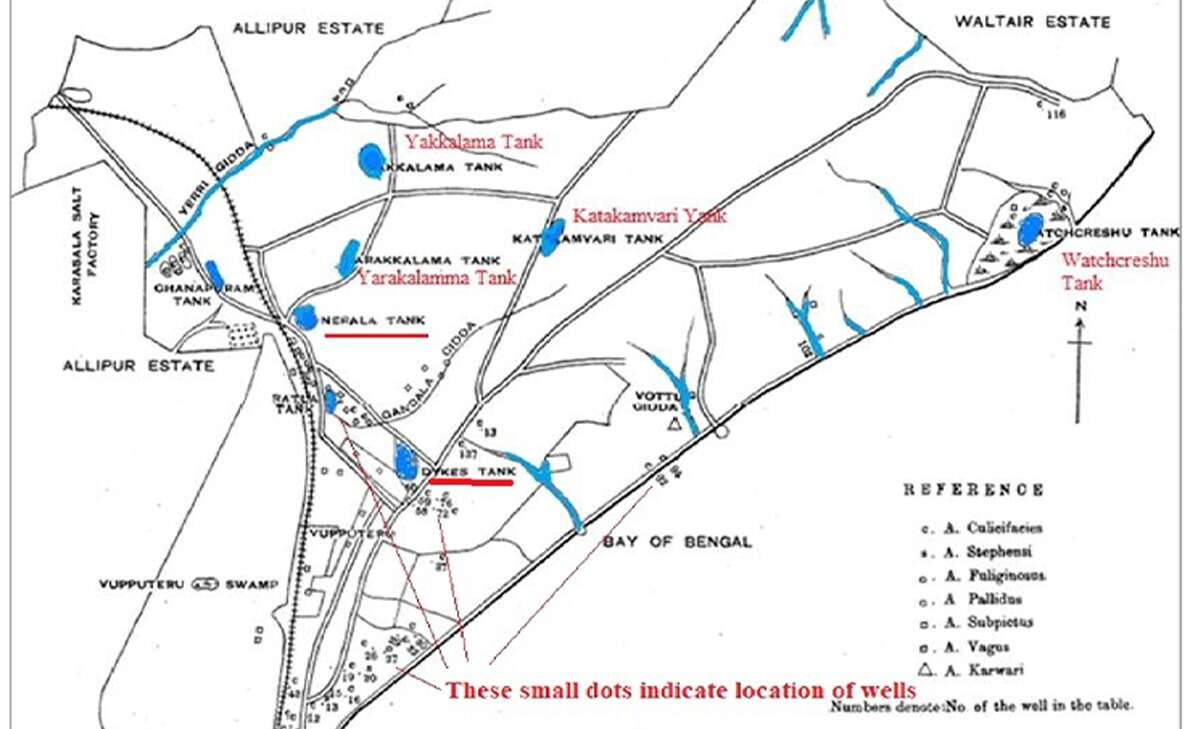
The municipal authorities began contemplating the scheme of supplying protected water in the early 1880s. A search was made to find a perennial source of water in the vicinity of the city. The Hanumanthavaka stream appeared to be the only perennial source available close to the city. Investigations and surveys started in 1884-85 and went on till 1890-91. The scheme was sanctioned in 1896-97 with an estimate of Rs. 4,21,000, half of this amount as a grant from the Provincial Government and the other as a loan to the municipality at a rate of 4.25% repayable in 30 years.
The plan was to construct a barrier to the Hanumanthavaka stream at Mudasarlova to form a reservoir with a catchment area of about six square miles to store about 25 million cubic feet of water. To construct filter beds and to lay a 10-inch pipeline to the town service reservoir (TSR Complex) near the present LIC building and to lay distribution pipelines to various municipal wards in the town. The construction of the project was undertaken by the Public Works Department. The residents of the city got the first taste of protected water on 18 December 1901, though the completion of the total project took some more time and the water supply scheme was finally handed over to the municipality on 21 May 1903. Initially, Waltair and Dondaparthi areas were not included in this scheme. As the elevation of Waltair was high, a pumping station was erected to pump water from the service reservoir and protected water was first supplied to Waltair on 28 April 1915.
The municipality supplied water through public taps. Initially tap connections were not given to the individual houses. In 1917 the Rani of Wadhwan contributed to the extension of pipelines to the northern portion of Allipuram and the Hindu Crematorium ground. Later tap connections were provided to institutions like King George Hospital, Mental Hospital, and Jail for their exclusive use.
By 1927 there were 19 public taps in Waltair, 71 in the town of which 22 were constructed by philanthropists. The most iconic one was, popularly known as Bommalakolayi, located near the present MVDM School / Andhra Baptist Church in the old town, constructed by Maharani Goday Narayana Gajapathi Row in memory of the late Rani of Kurupam. As per a news item published in Madras Mail on 5 May 1904, this tap (called fountain then) was opened by Mrs. Campbell, wife of the then District Collector, on 22 April 1904.
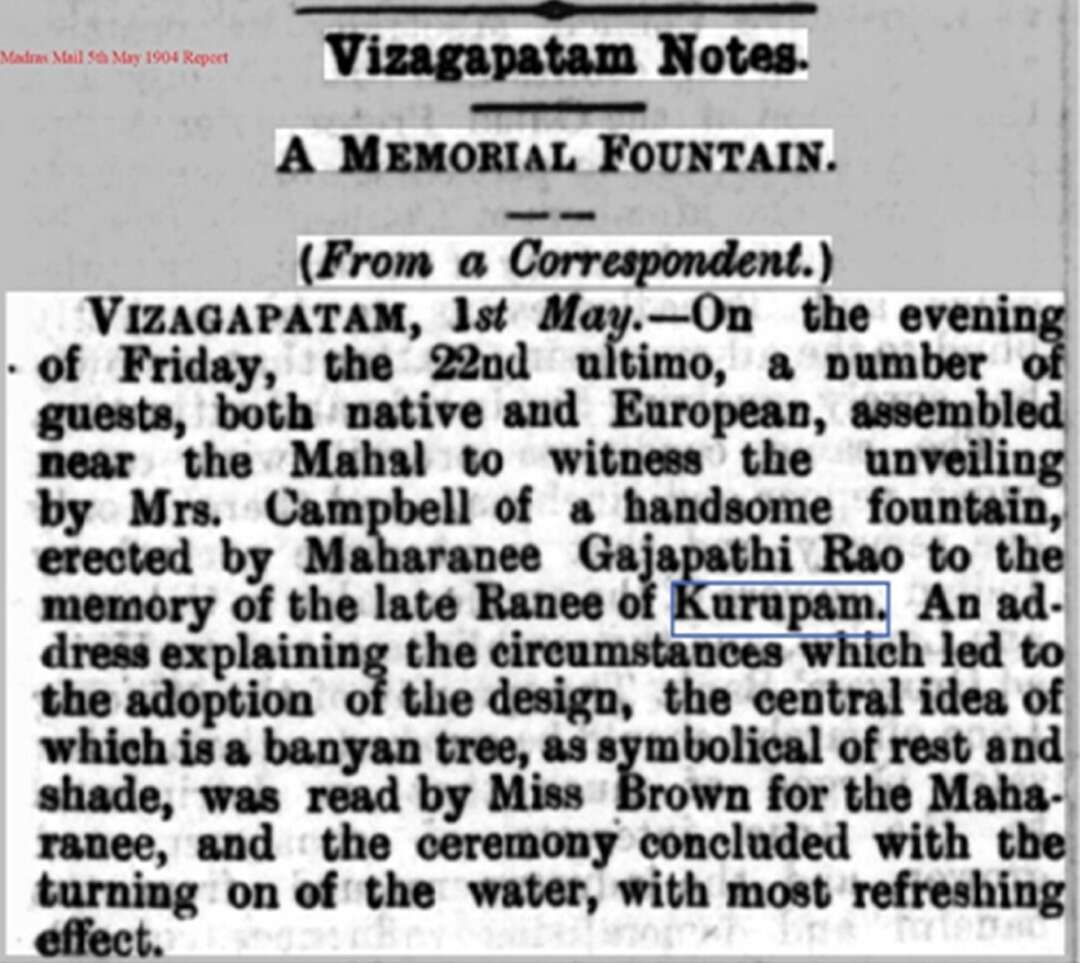
In those days public taps were like village wells where the women used to meet and gossip while waiting for their turn to fill their containers. Occasionally there used to be quarrels between someone or the other, about their rightful place in the queue formed with the placement of their containers, as the water supply was provided only for a few hours (one or two hours) in a day depending upon the availability of water. The middle-class families or those that could afford it, used to employ water carriers (a part-time occupation, the new water supply provided to the poor able-bodied men). These water carriers used to carry what are known as Kavidis. The Kavidi used to be a strong long bamboo stick, on either end of which hung a water container. The containers almost always used to be old kerosene tins of 4 gallons. The middle-class families used to employ these carriers to bring water from the nearest public taps to their homes and the carrying charges were paid according to the number of kavidies. This water was used only for drinking purposes and for other purposes they used to have their private well in their premises, which they were using for drinking purposes before the protected water supply scheme was introduced. This group of water carriers continued their occupation till the municipality provided house connections.
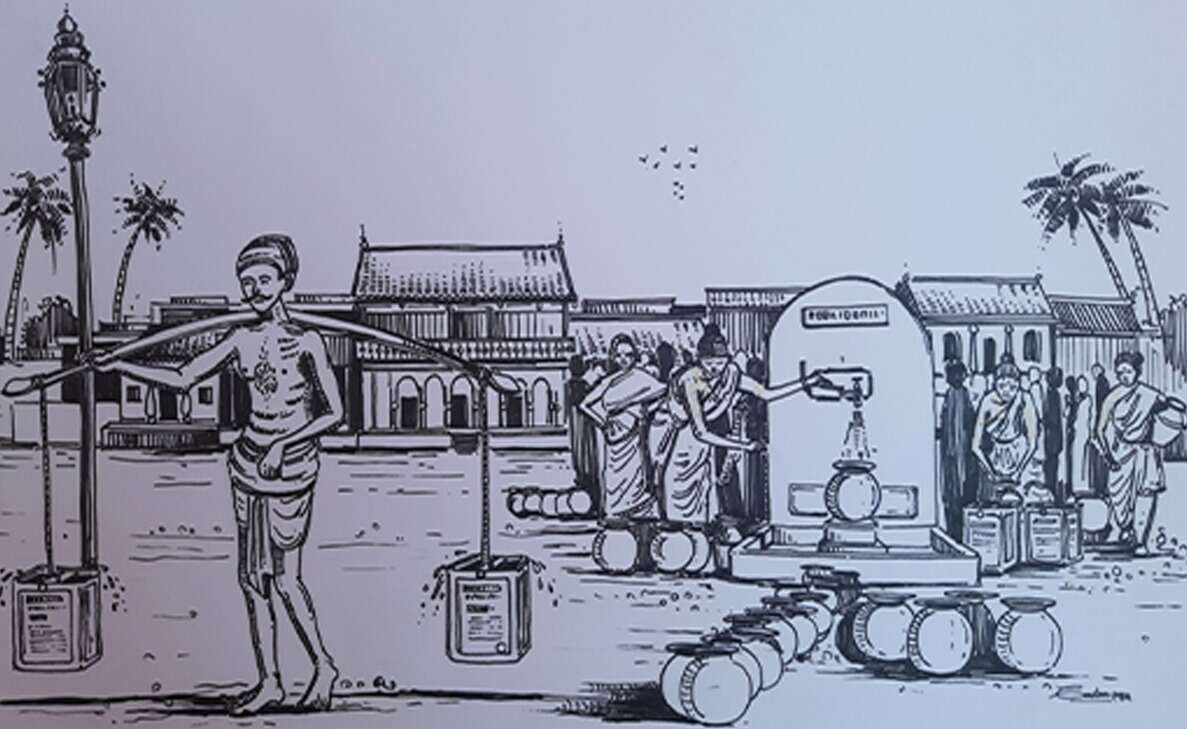
This water supply scheme met the needs of the city for about 10 to 15 years as people were using tap water for drinking and well water for other needs. However, the construction of a new harbour had put the municipality in a difficult situation in providing water to the harbour and to the ships. As the municipality was unable to meet their needs the harbour authorities looked for alternative sources. They found a spring on the south side of the entrance channel on Dolphin Nose Hill almost about 150 ft above the sea level in the area known as Lova Gardens. This Lova Garden area was owned by the family of local Zamindar Goday Narayana Gajapathi Rao. The government under the Land Acquisition Act acquired this land in the spring of 1928 for the development of the Harbour project. The harbour laid a pipeline to carry water from the spring to a water tank constructed towards the southwest side of the entrance channel. Water from this source was used by the harbour to supply ships through water barges. This saved the municipality from the further burden of providing water to the ocean-going ships.
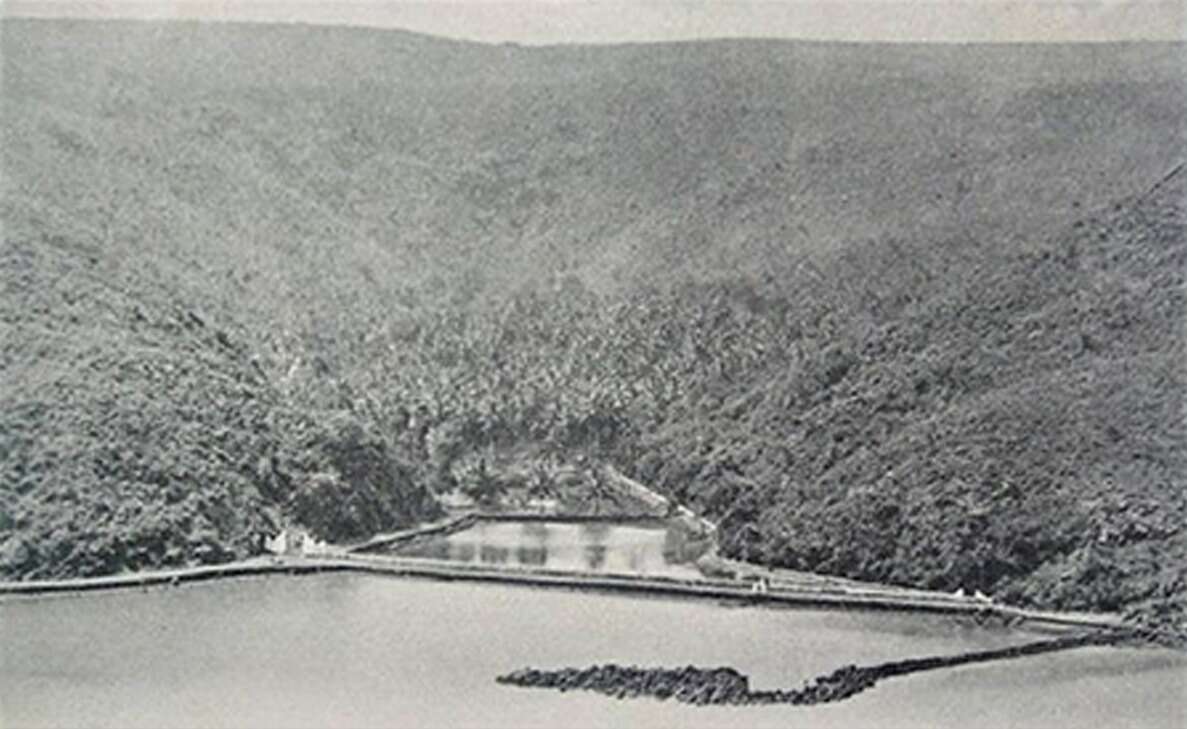
Further growth of population, due to the establishment of Medical College, King George Hospital and the shifting of Andhra University to Waltair put more strain on the Municipality to supply water. Added to this the Second World War had brought large contingents of the Army and Air Force to Vizag further increasing the water pressure. In that situation, the Army took up a new water supply scheme to tap water for the town from the Gostani River between Tagarapuvalasa and Bheemlipatnam. This Gosthani Water Supply Scheme was constructed by the Army Engineers in 1942 for a supply of an additional 4 lakh gallons per day (0.4 MGD) which was later handed over to the Municipality.
After independence, the following schemes were constructed. Post-independence, a series of dams and reservoirs like Gambhiramgedda, Tatipudi, and Meghadri were built, augmenting the supply. Yet, the ever-expanding city and industries face constant challenges. With new industries, the struggle for water persists, a testament to the ongoing importance of this precious resource.
1 Gambhiramgedda scheme in 1957 for a supply of 1.8 MGD per day
2 Tatipudi reservoir scheme in 1967 for a supply of 10 MGD per day
3 Meghadri reservoir scheme in 1977 for a supply of 10 MGD per day
4 Through canals from Raiwada and Yeleru reservoirs another 15 MGD supply was added in 1995
Water supply schemes for supplying water to Visakhapatnam City. The city limits shown have extended further in recent years. With the new industries coming up and the city growing, there is always a shortage of water to cater to the needs of residents and the industry, with deficit monsoon years creating crises. The Government is relentlessly struggling to find new water sources to meet the ever-increasing demands.
This article is written by heritage conservationist Vijjeswarapu Edward Paul. You can reach out to him via email at edwardpaulv@gmail.com or contact him at +91 94401 73695.
Stay tuned to Yo! Vizag website and Instagram for more heritage stories.


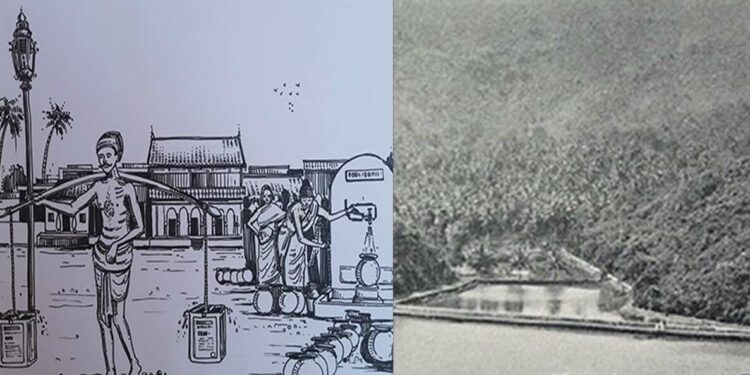







Discussion about this post